Research Facilities & Equipment
Research Facilities
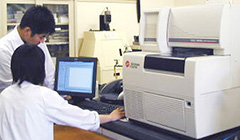
Gene-related Equipment Room & Gene Testing Facility The mutual testing facility is equipped with labware required for genetic modification experiments. It is equipped with instruments essential for molecular biological analyses such as the DNA sequencer.
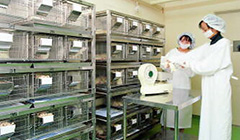
Lab Animal Facility This is a shared use facility for rearing and managing lab animals under proper circumstances for scientific use (research, experiment, test, education, sampling).
Equipment & Instruments
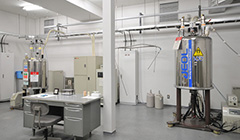
High-resolution Nuclear Magnetic Resonance (NMR) This is a device that analyzes the chemical structure of natural materials, organic, inorganic and macromolecular compounds using a powerful superconducting magnet.
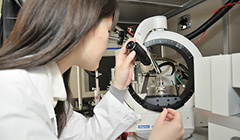
Single Crystal X-ray Structure Analyzer This device can accurately and in detail determine molecular structure such as the distance between atoms and bond angle by determining the position of each atom within a crystal.
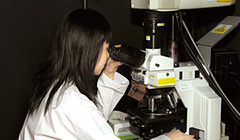
Confocal Laser Microscope This device can observe in detail microscopic structure such as samples with density (cells, etc.). It can provide 3D images of cells and enables an observation of high-resolution micro images.
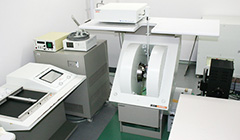
Electron Spin Resonance (ESR) Spectroscopy This device manifests its power in the study of the dynamic structure of biomembrance and reactions (example: cell damage caused by active oxygen) involving radicals.
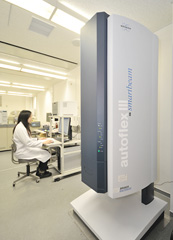
Mass Spectroscope (MS) This is a device for determining the elemental composition of a sample by ionizing a sample, separating the ions according to their mass-to-charge ratio and detecting them. We have several types of mass spectroscope, which are used according to the types of substance for analysis and purpose, such as the time-of-flight spectroscope (MALDI-TOF-MS) for the identification of proteins and the double-focusing mass spectroscope for the accurate measurement of molecular mass.
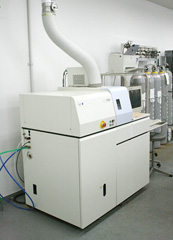
Inductively-coupled Plasma Mass Spectrometer (ICP-MS) This mass spectroscope can perform simultaneous quantitative analyses of 72 types of elements. It is used for measuring the amount of microelements in the environment (rivers).
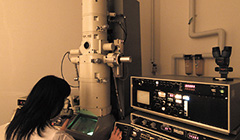
Electron Microscope This device uses an electron beam to observe the fine structure of virus, which cannot be seen with ordinary microscopes.
